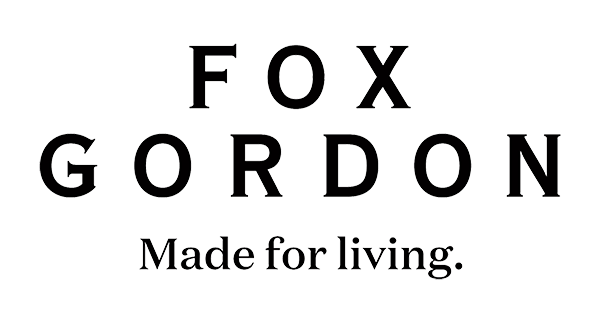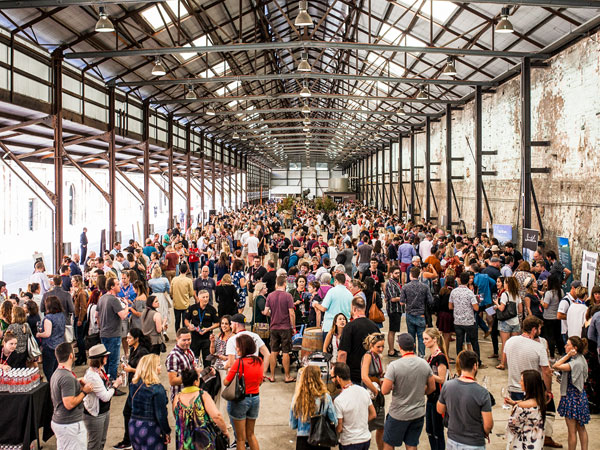09 Jan What makes a great wine festival?
How do wine tasting festivals ensure a quality experience and value for visitors? We talk to three people behind some of the industry’s best events to hear their approach.
It was intended as a celebration of biodynamic wines; those otherworldly in scope, made according to lunar rhythms and something aligned with what practitioners like to call “the cosmos”. The man and his wife had booked into all four sessions on the day of the Return To Terroir biodynamic wine tasting, a regular marquee event of the Melbourne Food and Wine Festival. By the third session, it was clear he was not going to see a fourth. Too much wine had been consumed and he was asked to leave.
“The man became upset,” recalls Natalie O’Brien, CEO of the festival. “He said it wasn’t made clear to him when he booked that he should be spitting the wine out.” Thereafter, all festival presenters would announce loudly at the start of each session that not only was spitting allowed, it was positively encouraged. This is what wine festivals are made of – the finest of lines between having a good time and things not behaving to script.
The Melbourne Food and Wine Festival, which celebrates its 25th birthday this year, does it better than most. It best fits the definition of a traditional wine festival, with masterclasses, podiums, white tablecloths and sommeliers serving. But it is now being joined by a host of smaller, racier events that aren’t promoted so much as festivals, but niche events tailored to a specific demographic.
“Wine has done an incredible job of isolating its drinkers with its language and customs,” says Dan Sims of Bottle Shop Concepts. He is behind events such as Game of Rhones (devoted to Rhone Valley grape varieties like shiraz and grenache), Gauchito Gil Malbec World Day, Vin Diemen and Pinot Palooza.
“With Pinot Palooza, it is first a fun pinot party,” Dan says. “We market it like a music festival.” He finds music and good food as well as good wine are central to the day’s success. “Wine is social. People want to learn about wine the same way they consume it.”
Game of Rhones is all about Rhone Valley grape varieties and gets everyone in fancy dress mode, channelling their inner Jon Snow or Daenerys Targaryen from Game of Thrones, and its target audience is the average punter. The ratio of punters to producers is the key to success, according to Dan. Go any higher than 22 punters to one producer and it simply doesn’t work, he says. Game of Rhones is the only festival that Brown Brothers attends. “It’s a lot of fun,” says Brown Brothers’ PR manager Caroline Brown. “And a great way to align your brand with other like-minded brands.”
Rootstock, which embraces producers of “natural” wines, is smaller again. Wine events don’t come more specialised. “We knew we could bring together a diverse, wild, fun, informative, edgy event that Sydney hadn’t seen, and hoped people would get into it,” says co-founder, Sydney-based wine writer Mike Bennie.
The first event in 2013, held on a single day, attracted around 3500 people. The second Rootstock stretched over two days with 13,500 in attendance, and last November, its third showing was set to be just as big. Now it seems Rootstock could head overseas for its debut in Tokyo this year too. For Rootstock, winemakers are approached by invitation only. Speakers such as Bruce Pascoe, the Aboriginal author/farmer, are selected for their “maximum impact”. Mike insists that only winemakers pour the wines at his event. “No reps and no marketing people.” This, Mike says, goes a long way toward creating a different atmosphere and level of engagement.
The Melbourne Food and Wine Festival has outlived many contemporaries, in part due to its financial support from the Victorian State Government and City of Melbourne, and also because it is constantly evolving. It is not about selling or promoting wine, something some producers probably don’t want to hear. “It is about an experience,” states Natalie O’Brien, firmly and often. “Some makers have told us, ‘We need a database, we need to sell our wine’, but they have to meet our criteria, what we are doing, and for us, it needs to be a strong consumer experience.”
Producers have their preferred wine festivals too. With costs going up, the bottom line is important. And there’s the question of avoiding “seagulls” – those who want everything for free. Events also have a use-by date. “I remember the Rutherglen Red [wine train to Rutherglen] and Yarra Valley Grape Grazing,” recalls wine marketer Kathy Lane of Fireworks PR. “They were great for their time, but you’ve got to keep recreating yourself.”
Susie Campbell, marketing manager at Campbells Wines, admits her family company has crossed off some “tired” events. “After a while you either find the same people turning up, year in year out, or the quality of attendees may drop, so we aim to trial new events,” she says.
Many prefer day events only, as night events can turn into cocktail parties. And quality food is essential. “Good food attracts a good, wine-interested audience,” says one winemaker. Quality glassware too. “We do not favour festivals where people taste from disposable plastic cups,” Susie says.
The safety of women is also of concern. Young women now tend to dominate the wine festival attending demographic. Sixty per cent of attendees to events staged by Bottle Shop Concepts are women. The under-35 demographic is rising to 67 per cent females and in some cities it’s closer to 75 per cent. Natalie O’Brien says it is Millennials, the 25- to 35-year-olds, who now dominate the Melbourne festival attendances.
For Chicago-born winemaker Brad Hickey from Brash Higgins in McLaren Vale, reaching out to a younger age group is important. “The Australian wine scene is not super big, so it’s amazing how many thousands of people we’ve connected with [at festivals], which is great for a small winery like Brash Higgins.”



No Comments